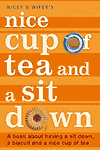Breton Biscuit Super Review | | Monday 22 Aug 2005 |
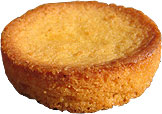
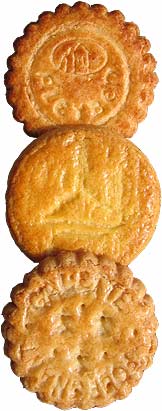 | Since the younger members of staff joined the NCOTAASD team our fact finding missions to continental Europe have been somewhat curtailed. This year, however, we felt that their training for such a mission was at an end and it was time to put what they have learnt into action. Where better to aim for than the one place in France where all carefully gathered biscuit information had been pointing to. The Bretagne region, or Brittany as we like to call it.
On a previous strike mission we had secured a pack of Galette Bretone, or French butter biscuits which uncharacteristically for France were superb with tea. French contacts in the UK (Mattiew from the 21st Century Fig Fest) had also informed me of the Palet Bretonne, a much thicker bulkier biscuit. So we arrived in Brittany with a simple plan of attack. Find more examples of the Galette Bretonne and track down the Palet Breton in its wild state.
Field HQ for NCOTAASD was the northen Breton town of Plouha, where we took up a strategic position just 30 meters from the nearest boulangerie. From here we could make between 2 to 3 daily sorties to stock up on bread, pastries and cakes. Up the hill was a well stocked super market which even had packs of PG Tips, McVities Digestives and Weetabix. Despite coming away with 80 pyramid bags, this removed a huge amount of 'running out of proper tea bags' tension that I had been struggling to overcome.
The Bretons identify themselves with other Celtic races, the Scots, Irish, Welsh and Cornish. This gives them noticeably different out look on life to the rest of France. Their Patisseries and Boulangeries all have the local Breton specialities available which appear to be: Far Breton, a rich custard tart with prunes in; Kouign Aman, an impressive butter toffee covered layered pastry; Rice pudding, found in vast bowls on the counter next to the till and Galette Bretonne a la maison. All this stuff was thoroughly tested by the younger members of staff and myself until we were sure what its agenda was.
The two supermarkets in Plouha were amply stocked with the biscuits we sought. I adopted a moderately rigourous approach to the Galettes and chose three different packs which seemed to be steeped in Breton baking tradition, and all appear to have been baked in Brittany too. As for the Palets Bretonne Wifey choose them because they came in a nice little wooden chest a picture of a lighthouse on it and starfish stuck on the side. Of course the bonus was that it contained the biscuits I needed to inspect.
As we have previously reviewed the Galette Bretonne I'll be brief and note that happily all three test subjects were indeed different. The Tanguy were much as I had experienced before with a sweet egg glaze over a crisp biscuit whose pure butter combines with its sugar to give an almost butterscotch flavour. Indeed the Pleyben the thinnest of the three put me in mind rattling around the bottom of a pack of Butterkist Toffee Popcorn. The French call this sort of stuff 'croustillant' which means crunchy or crusty depending what its finding itself applied to. The third member of the trio made by Mere Poulard (translation: Mother small-Chicken (possibly a Bantam)). Although being glazed by eggs that are apparently 'extra-fresh', being embossed with a little picture of Le Mont St Michel and being packed in a lovely box, these were perhaps my least favourite. They just seemed to lack rustic charm of the other two. However, that said, they still followed same basic recipe of butter, sugar, flour, eggs, a little raising and maybe a drop or two of vanilla essence. With ingredients like that your biscuits are going to be tasty.
So to the Palet Bretonne and the first thing of note and seeing how we were just talking about is that the ingredients are fairly much the same for the galettes. The Palets are however about half an inch thick. The best way of describing them is like a very well baked piece of Victoria sponge that has ceased to spongy. It has about the same density and possibly flavour although once again the butter contributes greatly to this. As a dunker in warm tea the Palet is going to be quite interesting but in piping hot tea its romantic French construction is going to let it down.
All in all we had a very successful tea tour in France, and in our next news letter I'll be going in to depth on the formidable and highly impressive Kouign Amann cake. Your feedback 2 messages |
| Fox's Classic | | Wednesday 20 Jul 2005 |
 | Regulars of the site will know that we hold the work of Fox's biscuits in the highest regard, but as some have spotted we have managed to overlook one of their staple offerings The Classic. Well lets get that sorted out as Norman Cook would get a sample to repeat over and over, probably by holding down a little button or something, "Right Here Right Now".
Now straight away I'll cut to the chase and tell you why we have over looked these biscuits for so long. It was simply their name that put me off. Yes I know that's a poor reason but I'm sure it's true. You see despite the biscuits having obvious qualities, made by Fox's, that golden crunchy biscuit they do so well, chocolate covered and cream up the middle, I couldn't get past the name. Even for Fox's Classic seemed a bit presumptuous. How was it a classic? I thought of classics of fields of human endeavor, such as art, engineering and entertainment and tried to square this with the world of biscuits. Surely the Bourbon or the Rich Tea are classics. This rather complex chocolate bar wannabe was surely too contrived to merit such a name. And so I passed it by time after time, like somebody who frequents the same places as you and yet have never spoken to.
However, the readers of NCOTAASD tend to spot such obvious oversights in our coverage of the planet's biscuits and so after yet another email imploring me to try the Classic I finally decided that it was time to clear the air and formally introduce ourselves to one another. This took the form of me popping in a 14 pack (two inner packs of seven) into my shopping basket. As with all NCOTAASD formal introductions the proceedings included a big mug of tea, and where chocolate covered biscuits are concerned a big knife to cleave them in half and study their inner workings.
Immediately I began to feel a little sheepish, as all the elements of the biscuit worked together in an unaffected display of Fox's biscuit craft. Yes there was a note of coconut in the biscuit but it played its part competently against the oatmeal. As I saw off my second Classic it slowly dawned on me. I had set this pleasant little biscuit too bigger a stage to play upon, it was a Classic within the bounds of Fox's biscuit kingdom. All the elements were there, the sweet Fox's chocolate, the soft cream filling and of course the light golden crispy biscuit. I apologised for the misunderstanding then let the younger members of staff introduce themselves.
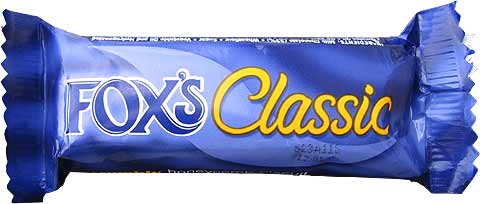
Your feedback 1 message |
| Leafy Pie and Green Tea Pocky | | Tuesday 21 Jun 2005 |
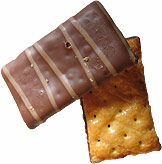
 | We all know that the Japanese are bonkers, but surely they must put all that on hold when they take a pause in their busy days for a cup of something or other (I'm being deliberately vague here) and a biccy. Well probably not, which is really what we were hoping for. So when Tom our book editor said he had brought back some biscuits for us from Japan after visiting his sister in the New Year we were quietly optimistic. When he also added that his sister had suggested some really nice shops were you can get really wonderful morsels and Tom had said 'No I think we should just go the nearest 7 to 11', we knew we would be in for a treat.
Looking like an after shave box, all black with bronze details, or possibly something to do with golf, Leafy Pies seem as if they are aimed at the gold medallion wearing segment of the Japanese biscuit buying public. If you still hadn't made your mind up then manufacturer Morinaga have added the English strap line 'The New Standard Biscuit'. This is the sort of excellent nonsense we were after. Turfing around their website which is a very odd mixture of 90% Japanese and 10% English reveals that they use this as their company wide strap line, it's that good. They also have some biscuits called 'Well'. Perhaps they are working on some new ones called 'Errm', and 'Actually'.
Inside the box are six small yellow sachets with a design on them that looks like a small bronze and black tartan ribbon with a gold leafy pie seal on it. The small sachet is something we have come to expect of oriental biscuits, and is preposterously small by western tea break standards. The two petite leafy pies within compared to chocolate digestive look like a juggernaut parked next to a mini. The leafy pie is very light indeed, and this would appear to be due to it being entirely hollow. It would seem that those puff pastry pie lids that you get on steak pies in pubs might have been the inspiration for this biscuit. A thin sugary glaze and an upper coat of chocolate complete the package. Biting one of these fragile little biscuits causes it to collapse into a little apologetic ball of damp pie crust in your mouth. A mere few seconds later you find yourself wondering if you really did just eat it, or did you simply imagine the whole thing. If this is what the Japanese are used to then the effort in despatching a HobNob would probably leave them exhausted and gasping for breath.
Whilst he was at it Tom picked us up a pack of genuine Japanese Pocky as made by Glico. Having had lessons on the Japanese tea ceremony he plumped for a pack of Green Tea Pocky. Until now we had only experienced the French Mikado, a Pocky made under licence in France by LU. So the first thing we noticed was that the Japanese ones are much shorter and stockier than their Euro version. The Pocky is best described as a salt-less pretzel stick 80% dipped in a chocolate like coating. In this case the coating was a very particular sort of green. There was a strange and delicate perfume to them, that proved impossible to accurately pin down, sort of quince like was the nearest I could get. However biting in gave way to a sensation akin to eating spat out toothpaste foam with a twig. Although that sounds disgusting, it actually was quite an interesting experience.
So has my uninformed opinion of the Japanese changed since sampling their biscuits? No of course not, they are plainly bonkers.
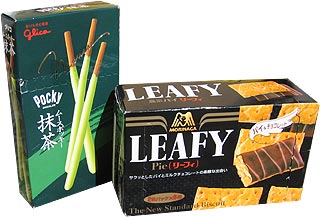
Your feedback 3 messages |
| |
|
|
